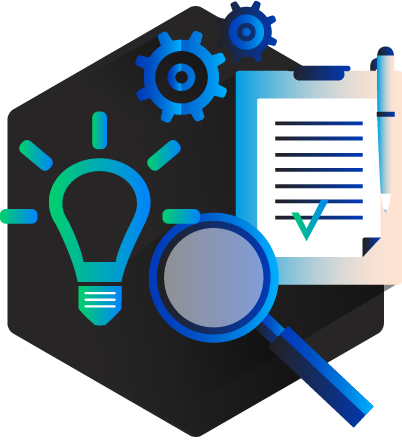Editor's Note: This is a guest blog post from Frank Sohn, President & CEO of Novus CPQ Consulting, giving his third party perspective on Logik.io.
---
Today we will look at CPQ Solutions from a maintenance point of view. This means we will look at all tasks a CPQ tool administrator needs to perform to
- Design a user interface and user experience for configurable products
- Add products, prices and their associated rules to that tool
The basic maintenance goal for all CPQ Solutions is to provide an "easy-to-learn" maintenance tool for administrators that helps them to setup their CPQ Solution fast and flexibly with the latest products and prices. Maintenance capabilities are important for every CPQ Solution because they determine how agile a CPQ Solution is, how much maintenance time the CPQ Solution requires and hence how much budget a customer needs to set aside for the on-going maintenance of the CPQ Solution. CPQ Maintenance consists typically of these high-level tasks
-
-
- Import Product Numbers
- Import Price List
- Design User Interface for configurable materials
- Setup Product Configuration rules
- Setup Pricing Rules and Workflow Rules
- Setup Quote Output
- Additional Solution Integration
-
We will address these steps in more detail below. See this blog post to learn about "CPQ Maintenance - What it is and why it matters".
Recently Logik.io offered me to look at their maintenance capabilities and provide some feedback.
I will also be presenting on a webinar Logik.io is hosting regarding this topic: How to Achieve a High-Powered, Low-Maintenance Configuration Admin Experience with Logik.io
Here is that feedback from my initial experience with the Logik.io admin experience:
Let's start with some background information on Logik.io. This is a new Salesforce CPQ-native, Configuration Solution for moderate-to-complex configuration use cases that uses a micro-service, headless and API first architecture. Since the Solution is based on Salesforce Lightning a basic assumption is that Salesforce administrators will provide the maintenance. They will also design all User Interfaces and hence influence the User Experience with Logik.io.
Now let's look into the different maintenance tasks listed above, and detail where Logik.io’s maintenance and administrative capabilities fit in:
Task 1 - Import Product Numbers (product catalog)
The first task any CPQ Solution needs to perform is to import Product Numbers (aka material numbers, part numbers, products, SKU or product catalog) and potentially other data into their solution. These Product Numbers (and other data) may come from CRM, PLM, ERP or other solutions.
Logik.io uses the same Salesforce external standard plugin that is used by other CPQ Solutions to set up an external configurator at the top-level product in Salesforce. The difference here is that Logik.io provides a pre-build page that ensures the top-level product from Salesforce will show up correctly in Logik.io with a single click. This ensures that Salesforce and Logik.io are correctly integrated. In addition to that, they offer a capability to import any relevant data (i.e., rules, fields, rule options, data tables) into Logik.io with a capability called "Matrix Loader" which is meant to mimic the same familiar functionality that Salesforce Admins are used to with Salesforce’s native Data Loader.
Task 2 - Import Price List (aka Price Books)
The second task is to import various Price Books into the CPQ Solution in order to show the correct price for all customers at all times. Here, because Logik.io focuses on the configuration aspect of CPQ and not pricing in particular, they assume that pricing and pricing rules (such as discounting and approvals) will be handled in Salesforce CPQ and will stay there.
Hence, Logik.io does not import any pricing rules and does not plan to provide a pricing product. However, for product pricing that is configuration-dependent, Logik.io’s rule builder and solving engine is capable of ensuring proper pricing based on those configuration rules. Note though that it is technically possible to import pricing rules if that should become necessary in the future.
Task 3 - Design User Interface for configurable materials
The third task is to design how the user interface (aka configuration layout) should look like. Here the administrator decides how features (i.e., TV Screen Size) and feature values (i.e., 32" Screen, 40" Screen, 50" Screen) are displayed to users. This impacts the user experience (UX) for example by providing "Help" to select the best TV Screen Size. There are multiple ways how CPQ Solutions provide this "Help" to users. It could be a short text; it could be an audio file; it could be a short video and so on. A wide variety of editors is available to design the User Interface, ideal is a visual editor which provides the administrator an option to see what the user will see without being logged in as a user.
At this time Logik.io offers a .csv file to build this User Interface via the Matrix Loader that was previously mentioned. They plan on building a visual User Interface editor (layout) at a later point in time.
Task 4 - Setup Product Configuration Rules
The fourth task depends on the complexity of the product configuration rules. There are simple product configuration rules and more advanced or complex product configuration rules. Simple Product Configuration Rules may not require any kind of script or programming language while more complex Product Configuration Rules require the use of a script or programming language.
Companies with complex products and potentially many, complex rules spent the majority of their maintenance time on this task.
Like other CPQ Vendors Logik.io provides users a modern editor to set up Product Configuration Rules. What stands out here is that "Rules" are not inherited but related to "Fields". "Rules" are generally set up in a way so that it helps the administrator to consolidate them and keep them organized. For example, Logik.io has one rule type that helps with different actions like hiding, messages, determining, excluding, or including something. This is expected to help administrators to find and update rules quickly.
Another capability that stands out is what Logik.io calls "Hyperjump". This is a visual capability that allows the administrator to see where fields and rules are used, which fields and rules are related. This should be very beneficial to determine the root cause for product configuration rule problems and to make updates as needed.
Task 5 - Setup Pricing Rules and Workflow Rules
The fifth task is about ensuring that prices and price rules are the same across CRM, CPQ and ERP or Order Management Solutions. This means for example that the price for Product A is $500 in CRM, CPQ and ERP or Order Management Solutions. Plus, workflow rules are set up to ensure authorizations are received before a quote is created or converted into an order. This task is handled differently by different CPQ Solutions. Some CPQ Vendors have considerable Pricing capabilities built into their solutions while others only expect to import the pricing logic or price from 3rd party systems.
Because Logik.io is strictly focused on configuration, the Logik.io approach is that they don't plan to offer additional capabilities here beside what Salesforce already offers.
Task 6 - Setup Quote Output (aka proposals)
The sixth task is about setting up quote (aka proposal) forms as needed. This could be different quote forms for different users in different geographic regions. It could also be an option to always attach marketing materials for certain products, links to a video about a product or to issue quotes on PDF files or issuing a quote on a website (aka microsite).
Again, because Logik.io is focused on augmenting Salesforce CPQ as a configurator, it does not provide additional quoting capabilities beside what Salesforce offers, but could provide Salesforce more CPQ data that could be used for quoting purposes.
Task 7 - Additional Solution Integration
The last task is about connecting CPQ Solutions to other solutions as needed. This could be an integration to many different solutions like CAD (Computer Aided Design), Visualization (for 2D, 3D, Augmented Reality and Virtual Reality), Billing, Revenue Recognition, and many others. Depending on what solutions need to be integrated this could impact the maintenance effort considerably. Many CPQ Solutions have off-the-shelf connections to CRM and other Solutions. Note that some of these tasks are one time setup tasks while others will require on-going maintenance.
Logik.io is native to Salesforce and hence has some of the inherent benefits. They also have a close partnership with Threekit for visual business requirements which may simplify or ease these maintenance requirements.
Summary
The Logik.io maintenance tasks are targeted toward Salesforce Administrators. In addition to simple product configuration rules, they also offer advanced product configuration rules which are written in JavaScript. A Sales BOM as well as a Manufacturing BOM is generated and pricing and quoting capabilities are driven by Salesforce because the Logik.io team is viewing the Pricing and Quoting capabilities as complimentary. The team is working closely with the Salesforce Product Management team and can be expected to be a trailblazer for some CPQ related capabilities going forward.
Make sure to attend the upcoming webinar with the Logik.io team, How to Achieve a High-Powered, Low-Maintenance Configuration Admin Experience with Logik.io to learn more about some of the capabilities mentioned above.



